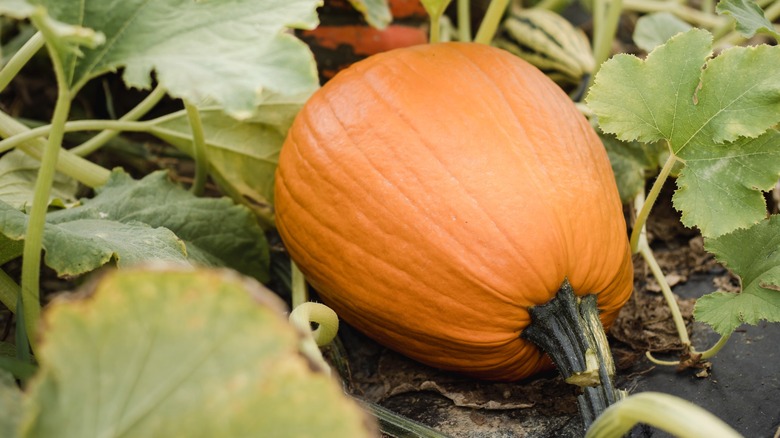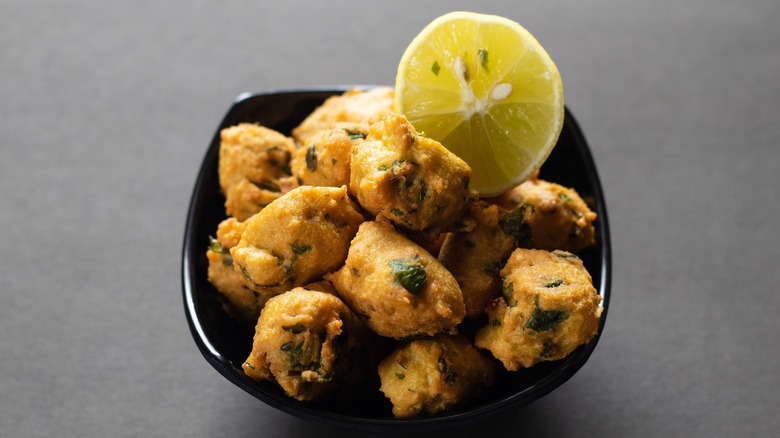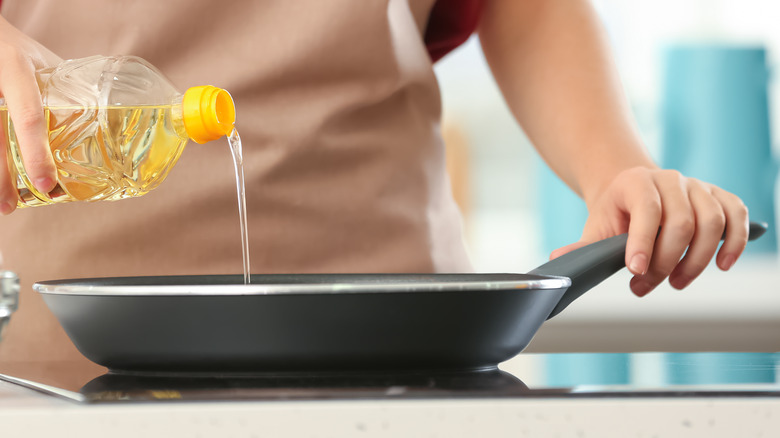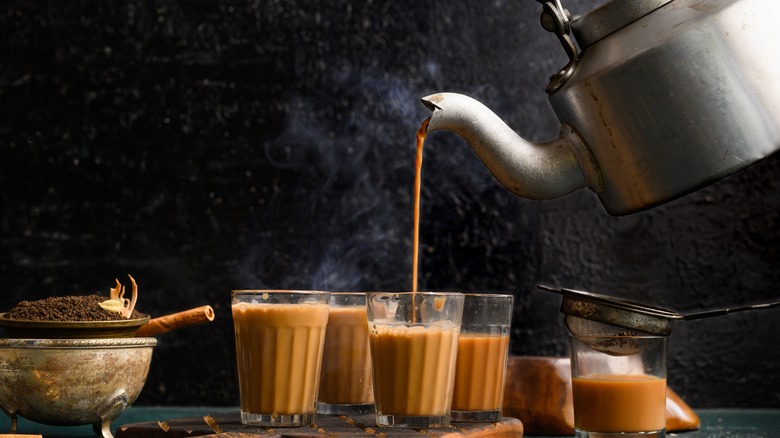Bora: The Delectable Bengali Fritters Made From Pumpkin Leaves
Crunchy leaves aren't the only thing you have to look forward to this autumn — introducing: pumpkin leaf bora, a crispy Bengali fritter.
Of course, the fall harvest is almost always all about finding ways to eat more pumpkins. However, if you're still trying to figure out the scientific explanation for why you love pumpkin spice so much, it might be time to switch up your gourd routine a bit. In fact, you might want to look at supporting characters like blossoms and leaves.
It's rare to see pumpkin leaves grace supermarket shelves, but that's not because they're inedible. In fact, it's quite the opposite. According to Martha Stewart, pumpkin leaves are rich in antioxidants and nutrients like potassium, folic acid, and vitamin B9. As a result, the foliage can be used like any other leafy green, shining especially in West African stews and Indian curries.
With a vegetal flavor similar to green beans and asparagus, growing your own pumpkin is one of the best ways to incorporate the tender leaves into your diet. But, what better way to do that than to whip up kumro pata bora?
A bit of bora background
According to K.T. Achaya's "The Story of Food," the earliest known mention of fritters can be traced back to a 12th-century Sanskrit text called "The Manasollasa," which recalls recipes for fried vegetables in ghee or mustard oil. With the passage of time, the dish evolved and spread across India's various regions.
Aside from differences in nomenclature (bora also goes by bhaja or pakoda), iDiva shares that the fried fare can also vary in terms of ingredients. In fact, typical Bengali fritters can include variations with spinach, onion, cauliflower, banana, and even leaves from jute or squash plants. What remains standard practice between renditions is the precise time of year that they are typically served.
Bora and monsoon season are a match made in heaven for many. But, this isn't any old coincidence. Condé Nast Traveller explains that during the rainy season, the lack of sunlight causes a dip in serotonin, which can be elevated by consuming carbohydrates (and spices). Plus, the fritter's crispiness also compensates for the damp conditions outside, creating the ultimate balance from the inside out. So, how is bora made?
How to make pumpkin leaf bora
Vegetarian and vegan-friendly, the dish just requires several spotless pumpkin leaves and a spiced batter, which can be made by whisking together 1/4 cup of chickpea flour with 1 teaspoon of baking powder, 1/2 teaspoon of nigella seeds and ground turmeric, a pinch of salt, and enough water to create a lump-free batter (via Bon Appétit) — you can also mix in some poppy seeds for a bit of texture.
For a more visually impactful dish, dredge whole leaves into the batter, frying one at a time in a neutral oil, until they turn golden. Alternatively, Better Butter explains that you can also chop the foliage and add that directly to the batter, dropping spoonfuls in the oil to fry. Regardless of what you decide, take care not to let the fritters get soggy. To minimize oil absorption, you can do the obvious and blot, but Southern Kitchen also suggests rethinking your flour choice and opting for gluten-free flour and starches. Kitchen of Debjani shares that adding rice flour to bora can actually add a substantial amount of crunch to the final product.
While kumro pata bora is a great way to use the leaves on a pumpkin plant in a tasty and waste-free way, the foliage isn't always readily available. Luckily, you can easily swap squash leaves for blossoms, or even thin slices of any firm vegetable.
Ways to enjoy the fritters
A satisfyingly crunchy coating of aromatic and warm spices gives the herbaceous pumpkin leaves an abundance of flavor in this dish, making it easy to understand why it's so beloved in Bengali cuisine. Spice Chronicles shares that bora is so integral to most meals that it is often served alongside rice, vegetable dal, and other fixings like onions and chilis.
Importantly, however, you can also just enjoy the fritter as a snack. Kitchen Mai recommends dipping the leaves into kasundi (a zesty mustard sauce) or simply enjoying them as is with some chai tea. While the squash fritters are best enjoyed immediately, if you made too many, don't fret.
They can still be stored, just don't expect them to taste exactly the same the next day. Since moisture is the enemy when it comes to storing fried foods, Our Everyday Life recommends letting food cool completely before transferring it to a paper towel-lined, airtight container and storing in the fridge until ready to reheat in the oven.



